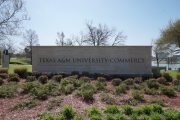
News from North Carolina marks another milestone toward developing an informed, politically active citizenry familiar with the basic fundamentals of the American Republic.
Homeschooled students now outnumber private-school students in North Carolina. This represents an increase of more than 14 percent from the year before, and a 27 percent increase from just two years ago. The state estimates that there are nearly 100,000 homeschoolers in North Carolina, while private school enrollments have been dropping ever since the beginning of the Great Recession. According to the Charlotte News Observer, this extraordinary growth is due to parental concerns about school violence, the lack of a religious focus in public schools, and the large classroom size.
But it also has to do with the accelerating pushback against the Common Core nationalized curriculum. Beth Herbert, the founder of Lighthouse Christian Homeschool Association, said, “Common Core is a big factor that I hear people talk about. They’re not happy with the work their kids are coming home with. They decided to take their children home.” This concern is bleeding over into the state’s General Assembly, which just passed legislation in July to create a commission to recommend a strategy to replace the Common Core curriculum in the state.
Noted Kelli Swinney, a former homeschool mom and blogger:
Common Core is a big factor nationwide. As a retired homeschool mom and a member of an education advocacy group, I have learned a lot of what’s going on in the education world. Common Core is bad, plain and simple. It’s a one-size-fits-all program and kids just aren’t that way.
There is plenty of dissatisfaction with public schools in the United States, which explains the virtual explosion in homeschooling from just 13,000 students in 1973 to well over two million at present. When asked to define that dissatisfaction, parents have expressed concerns about the school environment, the quality of the academic instruction being offered, the curriculum being followed, classroom bullying, and with the inability of public schools to cater adequately to their child’s individual needs. When pressed on the matter, many were concerned about the lack of religious or moral instruction being offered, along with student safety, availability of drugs, and the ever-present negative peer pressure to conform.
According to the U.S. Department of Education, 91 percent of parents quizzed expressed a concern about the public school environment, while 77 percent of them expressed a desire to provide more moral instruction, with 64 percent of them wanting to provide more religious instruction for their children. Seventy-four percent expressed dissatisfaction with the academic instruction in public schools.
Two Supreme Court cases, Meyer v. Nebraska and Runyon v. McCrary, opened the floodgates to allow homeschooling to gain a foothold against public education. In Runyon, the court stated that it had “repeatedly stressed that … parents have a constitutional right to send their children to private schools and a constitutional right to select private schools that offer specialized instruction,” while in Meyer, a majority stated that the “liberty” protected by the Due Process Clause “denotes not merely freedom from bodily restraint but also the right of the individual to contract, to engage in any of the common occupations of life, to acquire useful knowledge, to marry, establish a home and bring up children, to worship God according to the dictates of his own conscience, and generally to enjoy those privileges long recognized … as essential to the to the orderly pursuit of happiness by free men.”
Since 1999, the number of children who are being homeschooled has increased across the country by more than 75 percent. Part of the increase is driven by the continuing proof that homeschooled students are receiving a superior education. According to Education News, “Homeschooling statistics show that those who are independently educated typically score between the 65th and 89th percentile on [standardized assessment] exams, while those attending traditional [public] schools average at the 50th percentile.”
Such education carries over into college as well. A 2010 study by Dr. Michael Cogan of the University of St. Thomas in Minnesota found that college students who have been homeschooled fare better than those who have attended public school on a number of levels: They achieve a higher first-year GPA than the other students, their fourth-year GPA bests the overall average, and they have a higher college graduation rate compared to the rest of the graduates.
Homeschool graduates, in addition, are more involved in civic affairs and vote in much higher percentages than their peers. According to the Home School Legal Defense Association (HSLDA), “76% of those surveyed between the ages of 18 and 24 voted within the last five years, compared with only 29% of the corresponding US populace. The numbers are even greater in older age groups, with voting levels not falling below 95%, compared with a high of 53% for the corresponding US populace.”
The momentum behind the homeschool movement continues to grow. According to Dr. Brian Ray of the National Home Education Research Institute (NEHRI), the number of students homeschooling in the future will increase because “a large number of those individuals who were being home educated in the 1990s may begin to homeschool their own school age children and [because of] the continued successes of home educated students.”
All that being said, however, the biggest impetus driving parents toward educating their children at home is the Common Core agenda being pushed by educrats interested only in homogenizing and dumbing down America’s students. In an interview with TNA, Alan Scholl, director of Freedom Project Education (FPE, an online “classical” homeschooling program), noted that his school has grown from 22 students just three years ago to more than 700 students currently. Scholl added, “We had to turn down 130 students after the final enrollment date ended in August. That means we’re likely to have more than 1,000 students starting in the fall of 2015.” When asked how much the opposition to Common Core was adding to the momentum at his school, Scholl responded: “At least half!”
When asked about the dangers of Common Core, Scholl referred to the FPE website, which explains:
In brief, each of the 50 states has been bribed by the federal government to accept the copyrighted and thus unalterable common core standards — even though most Americans have no idea what they entail — by offering those states millions….
To date, 46 states have accepted common core money, ceding curricular control to the federal government and taking it away from parents, teachers, and local school boards. Beyond the educational mediocrity the Common Core standards will further enshrine in public schools, there are elaborate plans to use the required national assessments within the Common Core standards as a tool to institute massive data collection about American schoolchildren that has nothing to do with education, and everything to do about government intrusion and control.
As the pressure mounts to implement the Common Core curriculum across the country, so does the pressure not to conform. This is being reflected in the massive growth of homeschooling in North Carolina, and the exponential growth at FPE.
A graduate of Cornell University and a former investment advisor, Bob is a regular contributor to The New American magazine and blogs frequently at www.LightFromTheRight.com, primarily on economics and politics. He can be reached at [email protected].




